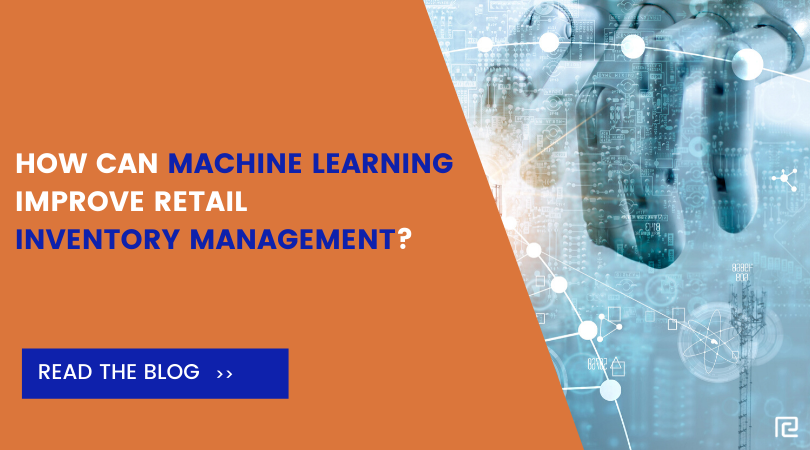INTRODUCTION
The current interest in artificial intelligence and machine learning has been generated by advances in computer technology and the abundance of data. Applications of this new technology are well known to be part of the operations of tech giants such as Google, Facebook, Linkedin, etc. But what about the retail industry? In this article, we’ll outline possible use-cases for machine learning in retail, and touch upon some of the work currently being undertaken at Retailisation.
WHY MACHINE LEARNING?
Our world has become progressively more integrated with computer technology over the past couple of decades. Advances in processing power, storage, and the advent of IoT (Internet of Things) have permitted the generation, storage, and analysis of large volumes of data. The retail sector has not been immune to these changes, and it has significantly contributed to our mission to make retail space more productive for our clients.
Machine Learning is a term that refers to a set of technologies that allow computers to learn from data. The result is a computer that is capable of making intelligent decisions in an automatic fashion. In effect, machine learning is a means of converting stored data into actionable knowledge.
RECOMMENDATIONS
A common application of machine learning in business is to generate recommendations; think of the personalized movie recommendations that Netflix provides to its customers, the users. In its essence, machine learning recommends products to customers in an intelligent, data-driven fashion. The idea here is to use data to construct “profiles” of each customer. An algorithm can then be trained to group similar customers together, thereafter products can be recommended to any customer based upon the purchasing behaviour of similar customers.
 At Retailisation, we developed a recommender system to help manage store inventory assortments for our clients. We treat the retail locations as the ‘customers’ and the inventory items as our ‘products’, to use the language from the previous paragraph. Profiles for each store are constructed using sales data along with product and store attributes. The aim is to be able to cluster similar stores together and from that grouping, offer productive assortment recommendations that are customized to individual stores.
At Retailisation, we developed a recommender system to help manage store inventory assortments for our clients. We treat the retail locations as the ‘customers’ and the inventory items as our ‘products’, to use the language from the previous paragraph. Profiles for each store are constructed using sales data along with product and store attributes. The aim is to be able to cluster similar stores together and from that grouping, offer productive assortment recommendations that are customized to individual stores.
SALES FORECASTING
Another practical application of machine learning in retail is to predict future behavior. Being able to forecast sales, for example, is of immense practical value for a retailer. To this end, machine learning can be used to train a computer to recognize sales patterns and trends from historical data. Based upon this training, the computer can then predict future sales with a high level of accuracy.

This is especially important when merchants are always stocking up to achieve ‘X weeks of Cover’, a much-used ratio to determine the ‘right’ level of stock to cater for future sales. Without knowing future sales, merchants tend to infer the future from what happened in the recent past. And that is a problem. I explain: When rates of sale (the average number of units sold per week) are high, the targeted stock-levels will increase and will be highest when sales peak. This leads to overstocks when sales decrease again. When rates of sale are low, the stock levels will be too low for future sales, leading to shortages and lost sales. Knowing what is likely to happen in the future at a very granular level (by product by retail location) will enable retailers to use the ‘Forward Cover’ instead. Inventory management decisions will now be proactive instead of responsive, greatly reducing the risk of stock-outs and redundancy (markdowns).
To get better at forecasting, historical data is required of as many relevant features as possible. This will include sales, but may also involve other features such as past sales promotions, weather conditions, holidays, etc. Generally speaking, the longer back in time and the more relevant the input, the better.
A first generation sales forecasting solution is already integrated in our application and produces forecasts for options (products aggregated over all sizes) at individual stores. A second generation solution is currently under development, that incorporates the lessons learned from the first version, and utilizes improved machine learning logic.
SUMMARY
This article is meant to briefly touch on why machine learning is such an important technology, and some possible use cases within the retail sector. Being a data-driven company, here at Retailisation we are working hard to explore different ways of extracting value from data and produce the best possible data driven services for our customers.
IF YOU ARE INTERESTED IN LEARNING MORE ABOUT MACHINE LEARNING APPLICATIONS IN RETAIL INVENTORY MANAGEMENT, DOWNLOAD THE ARTICLE BELOW.

